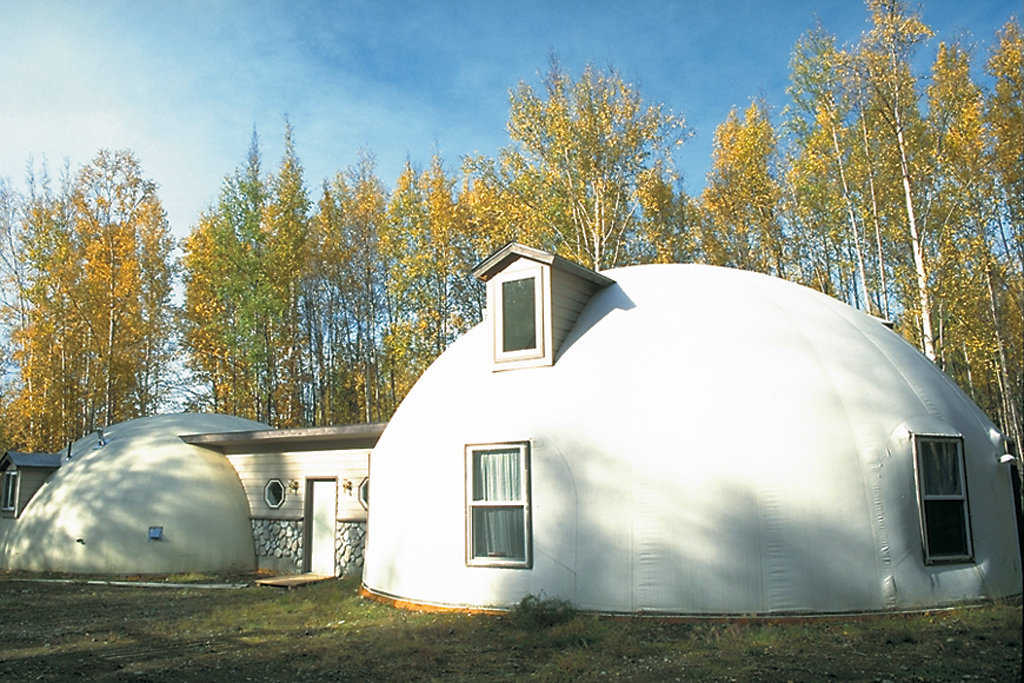Finally warm and secure
If you visited the Morrisetts’ new Monolithic Dome home in Anchorage, Alaska and asked, “Is everybody happy?” you would probably get an enthusiastic “yes” from the three humans and an affirmative bark from their dog. The reason is simple: the Morrisetts — David, who is 42 and a computer programmer, April, who is 39 and an office manager for a vending machine company, Joshua, their almost-4-year-old son, and Chewbacca their dog— all love their new dome home.
April says, “We are finally warm, comfortable and secure. We’re out of the cold, cramped, shaky trailer we were living in.”
David adds, “Feelings are totally different here. The house is very quiet. We don’t hear the blowing winds. We feel secure. We’ve experienced two or three earthquakes in our dome and it’s just been no big deal and no cracking. There was a significant fire in our area, but we felt safe.”
Joshua, who insisted on checking construction progress every day while the home was being built, now enjoys drawing pictures of “our dome” and describing it to anyone who will listen.
The Morrisetts say that their family pet, Chewbacca, a female Husky and Chesapeake Retriever, really resented their old cramped quarters but now loves having her own wall to back against and stretch.
An open, cozy dome
The Morrisetts built their home on a 2-1/2-acre site in a forested area of Anchorage — the first Monolithic Dome home there. Actually it consists of two domes: Their house is 36′ × 14′ with a 4’ stemwall and 1800 square feet of living space. The garage has a diameter of 32’. Their front entrance is a mud room, a rectangular structure of 900 square feet that connects the garage to the house. (Alaskan homes often include areas, called mud rooms, in which they remove muddy boots and wet parkas before entering the house.)
April says, “We love the open coziness of our dome. Downstairs we have a large living room and family area, a small computer room which doubles as a guest bedroom, a dining area, kitchen and bathroom. The upstairs includes a large master bedroom and bath, a second bedroom, and plenty of closets and storage.”
The Morrisetts heat the entire dome with a radiant hot water heating system, that pumps hot water through tubing looped under the concrete on the lower floor and stapled to the rafters on the upper floor. A natural gas furnace in the garage heats the water, that an electric pump circulates throughout the dome.
Birthday and moving day
“We moved in on my birthday — March 22, 1997,” April says, “so we’ve already been through some pretty cold weather. Our natural gas bill has averaged $90 even for the coldest months.”
“We set our thermostat at 70 degrees and keep it there,” David says. “It’s comfortable. No adjusting is needed.”
Problem gets solved
Asked about problems, April replies, “The only one so far has been a leak where the dome meets the connecting section that’s between the house and the garage. Because it’s flat, this section gets an accumulation of moisture from rain or snow.”
Since War Bonnet Construction built their domes, the Morrisetts called the owner, Ray Ansel. He corrected the leak with Bituthene, a rubbery membrane that comes in rolls. When spread over an area, Bituthene fills in and seals gaps and holes — even nail holes.
April says, “We’ve had about two weeks of rain since the Bituthene was applied but no leaks.”
Building a Monolithic Dome in Alaska
Undoubtedly, building in Alaska sometimes requires quick thinking and ingenuity. In 1996 Anchorage got its first significant snowstorm on the very day construction began at the Morrisetts. It’s one of those memories they now laugh about.
“But it wasn’t so funny then,” April says. “The house foundation was poured and then the snow began. We had to keep the concrete from freezing. Dave scurried about, bought bales of straw, and spread that over the concrete. It was the dead of winter and very cold.”
Since the cold continued, Ray Ansel spread a parachute over the Airform. It stayed there until the first layer of foam was sprayed on the dome’s interior. “Then,” David remembers, “the crew was able to work inside in shirt sleeves.”
But those worries and problems are now in the past. The Morrisetts say that because theirs is the first Monolithic Dome home in Anchorage, it gets lots of attention. April says, “People stop to look. They want to see the inside. One of our volunteer firefighters, who also delivers pizza, was really happy to get our order. This gave him a chance to come in and look around. He was really impressed with how fireproof the domes are.”
Note: We originally published this article in our Spring/Summer 1999 Roundup. Prices quoted were valid in that time period.
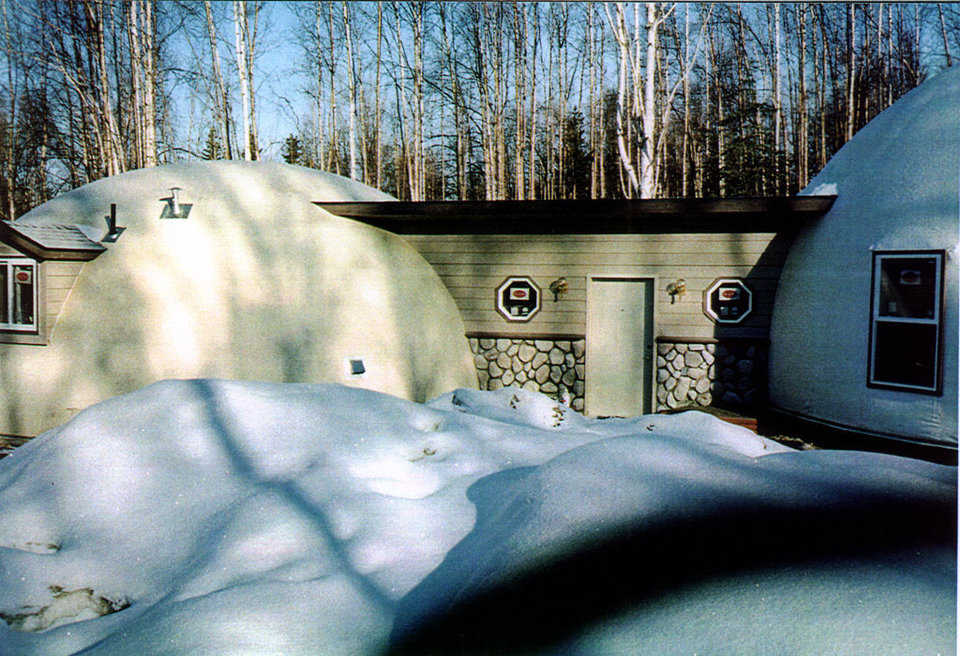
Two Domes — The home dome has a diameter of 36’ and a height of 14’ with a 4’ stemwall. The garage dome has a diameter of 32’.
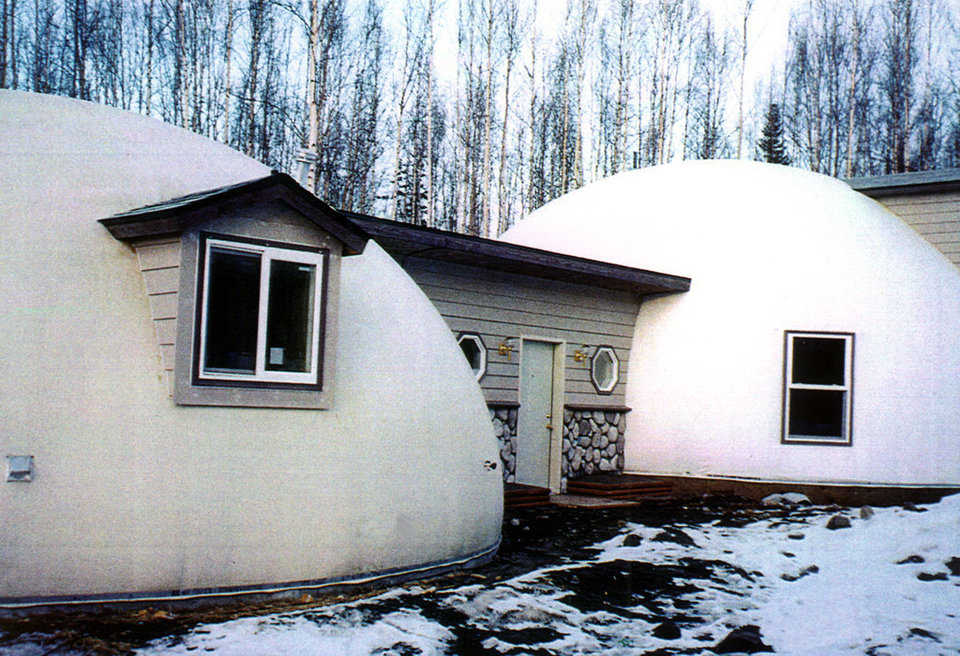
Front Entrance — The front entrance is a mud room, a rectangular structure of 900 square feet that connects the garage to the house.
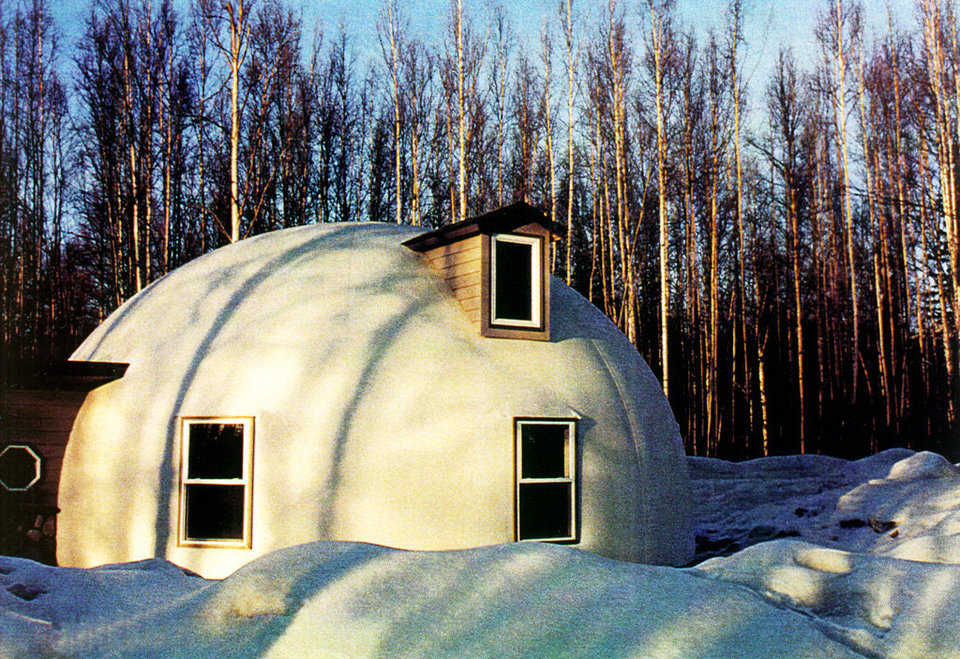
Finally warm and secure — The Morrisetts love their Monolithic Dome home. They enjoy the warmth and security it provides.
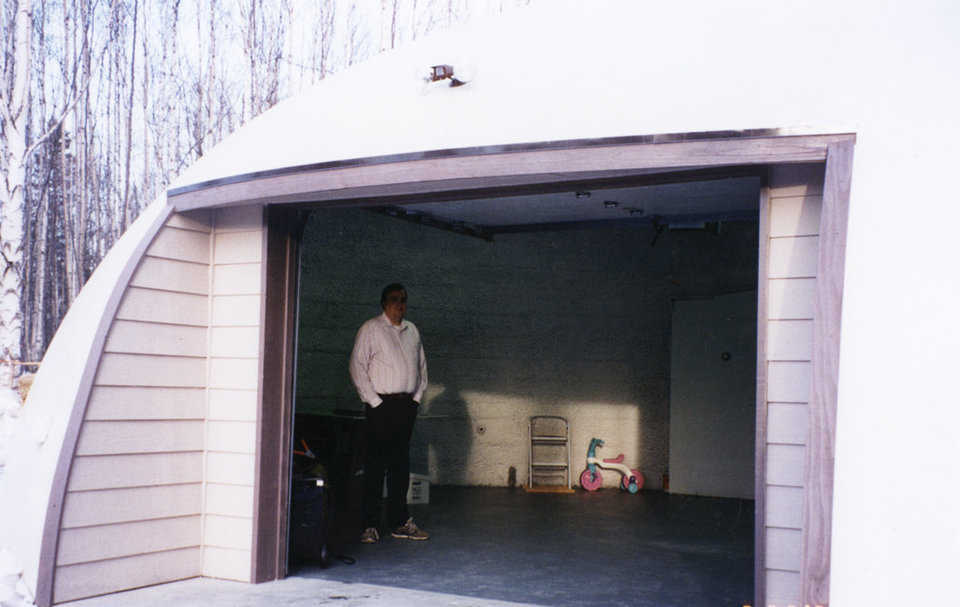
An Attention-Getter — The domes attract lots of attention. People stop and look and ask to see the inside. A firefighter who did so was very impressed with the fire-resistance of the domes.
